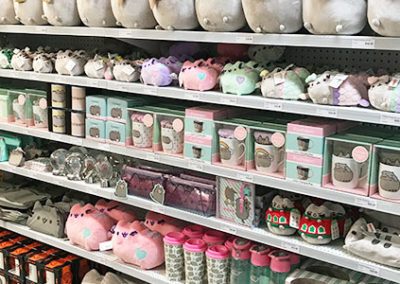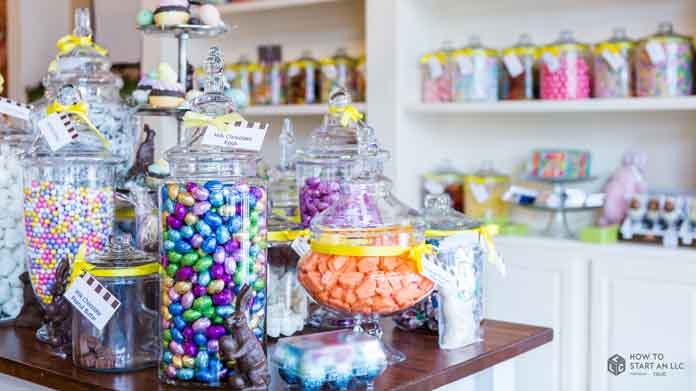A Biased View of I Luv Candi
A Biased View of I Luv Candi
Blog Article
Our I Luv Candi Statements
Table of ContentsI Luv Candi Fundamentals ExplainedI Luv Candi Things To Know Before You Get This7 Simple Techniques For I Luv CandiI Luv Candi - TruthsI Luv Candi - The Facts
We've prepared a great deal of business plans for this type of project. Right here are the typical consumer sectors. Consumer Sector Summary Preferences Just How to Locate Them Children Youthful consumers aged 4-12 Vivid sweets, gummy bears, lollipops Companion with regional institutions, host kid-friendly events Teens Teenagers aged 13-19 Sour candies, novelty items, trendy treats Engage on social networks, team up with influencers Parents Adults with kids Organic and much healthier options, nostalgic candies Offer family-friendly promotions, market in parenting magazines Trainees School students Energy-boosting candies, economical snacks Partner with neighboring universities, advertise during exam periods Present Consumers Individuals trying to find presents Premium delicious chocolates, present baskets Develop captivating display screens, use adjustable gift alternatives In assessing the monetary dynamics within our sweet-shop, we've located that clients typically invest.Monitorings indicate that a regular client often visits the store. Certain durations, such as holidays and unique events, see a surge in repeat brows through, whereas, during off-season months, the frequency may dwindle. da bomb. Calculating the life time value of a typical customer at the sweet-shop, we approximate it to be
With these factors in consideration, we can reason that the average profits per consumer, over the course of a year, hovers. The most successful customers for a sweet store are usually families with young kids.
This group tends to make frequent purchases, boosting the shop's revenue. To target and attract them, the sweet-shop can utilize vivid and playful marketing methods, such as vivid displays, catchy promotions, and maybe also hosting kid-friendly events or workshops. Producing a welcoming and family-friendly environment within the shop can additionally boost the overall experience.
The Buzz on I Luv Candi
You can likewise estimate your own revenue by applying various presumptions with our financial prepare for a sweet store. Average monthly revenue: $2,000 This sort of sweet store is typically a small, family-run business, probably recognized to residents but not attracting huge numbers of visitors or passersby. The shop might offer an option of typical candies and a few homemade deals with.
The shop does not normally lug uncommon or expensive items, focusing instead on inexpensive treats in order to preserve normal sales. Thinking a typical costs of $5 per client and around 400 customers per month, the month-to-month revenue for this sweet-shop would be about. Typical monthly profits: $20,000 This candy shop gain from its calculated location in a hectic city area, bring in a large number of consumers searching for pleasant indulgences as they go shopping.
Along with its diverse sweet selection, this store could also offer relevant products like gift baskets, candy arrangements, and novelty products, giving multiple profits streams - chocolate shop sunshine coast. The store's area calls for a higher allocate rental fee and staffing but results in greater sales quantity. With an approximated average costs of $10 per consumer and about 2,000 customers monthly, this shop can generate
The Best Guide To I Luv Candi
Found in a major city and traveler destination, it's a huge facility, commonly topped several floors and perhaps component of a national or worldwide chain. The store supplies an enormous variety of sweets, including exclusive and limited-edition things, and product like branded garments and devices. It's not just a shop; it's a destination.
These More Info tourist attractions help to attract countless visitors, considerably increasing potential sales. The functional costs for this kind of store are substantial due to the area, size, staff, and features provided. Nevertheless, the high foot web traffic and typical spending can cause significant revenue. Assuming a typical acquisition of $20 per client and around 2,500 consumers per month, this front runner shop could accomplish.
Category Examples of Costs Ordinary Monthly Cost (Variety in $) Tips to Lower Expenses Rent and Utilities Store lease, power, water, gas $1,500 - $3,500 Think about a smaller area, negotiate rent, and use energy-efficient illumination and home appliances. Inventory Candy, snacks, packaging materials $2,000 - $5,000 Optimize stock monitoring to lower waste and track popular items to avoid overstocking.
Advertising And Marketing Printed matter, on-line advertisements, promos $500 - $1,500 Emphasis on cost-efficient electronic marketing and utilize social media platforms free of charge promotion. camel balls candy. Insurance Business liability insurance policy $100 - $300 Look around for competitive insurance prices and take into consideration packing plans. Devices and Maintenance Cash signs up, present shelves, repair work $200 - $600 Buy pre-owned equipment when feasible and execute normal maintenance to extend tools life-span
I Luv Candi - The Facts
Debt Card Handling Fees Costs for refining card settlements $100 - $300 Bargain reduced processing costs with repayment cpus or check out flat-rate options. Miscellaneous Office supplies, cleaning up products $100 - $300 Get wholesale and try to find discounts on materials. A candy store becomes profitable when its complete income surpasses its total fixed prices.

A large, well-located candy shop would obviously have a greater breakeven point than a tiny shop that doesn't require much income to cover their expenditures. Interested about the earnings of your sweet shop?
I Luv Candi - Truths

Finally, economic declines that reduce customer investing can influence sweet shop sales and earnings, making it crucial for sweet-shop to manage their expenses and adjust to transforming market problems to stay lucrative. These threats are commonly consisted of in the SWOT analysis for a candy shop. Gross margins and web margins are essential indicators made use of to assess the earnings of a sweet-shop service.
Essentially, it's the earnings staying after deducting prices straight related to the sweet stock, such as purchase prices from providers, production prices (if the candies are homemade), and team incomes for those involved in manufacturing or sales. Web margin, conversely, consider all the costs the candy shop incurs, including indirect costs like management expenses, advertising, lease, and taxes.
Sweet-shop normally have a typical gross margin.For instance, if your sweet store earns $15,000 each month, your gross earnings would certainly be about 60% x $15,000 = $9,000. Let's highlight this with an example. Consider a sweet shop that offered 1,000 sweet bars, with each bar priced at $2, making the complete income $2,000. The shop incurs expenses such as acquiring the candies, utilities, and incomes for sales staff.
Report this page